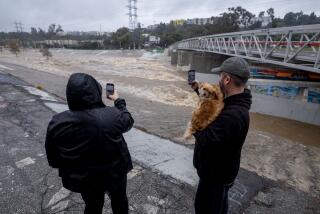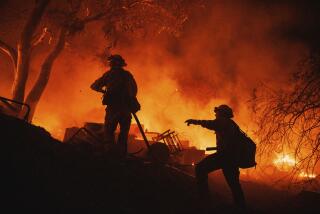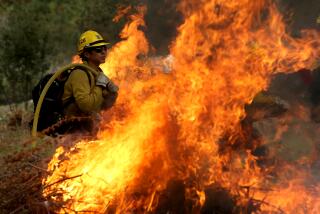Editorial: A state on fire: How to deal with emergencies in a permanently altered climate

Firefighters keep watch as the “Valley Fire” continues to flare up in the town of Middletown, California on September 15.
Fire officials knew this would be a bad fire season, thanks in large part to the long drought. But this bad? The state is already about 1,500 fires ahead of the typical fire season, and the Santa Ana winds haven’t even started yet.
If Gov. Jerry Brown is right, this week’s firestorms were not an aberration. “This is the future from now on,” Brown said a press briefing Monday about the mega-fires still tearing through semi-rural parts of Northern California that have chewed through 141,000 acres and destroyed more than 800 homes so far. “It’s going to get worse just by the nature of how the climate is changing.”
He was talking about fires, but he could have been referring to the unusually heavy rains and flooding in Southern California this week, or the heat wave the week before, or the inevitable mudslides caused by fire and rain this winter, or any number of natural disasters exacerbated by the changing climate. The climate isn’t just changing, it has changed. And that raises a host of questions that need to be answered. Foremost: Will strategies and methodologies designed in the 20th century for emergency preparedness and response be effective in a climate-changed 21st century? The answer: probably not.
Laudably, Brown and California legislative leaders have been developing long-term plans to reduce the state’s contribution to climate change, with some success and some failure. And California’s emergency officials have been including climate change in their assessments of the state’s natural disaster risk. But more needs to be done: Just as necessary as the sweeping state and federal laws that will guide the coming decades are the near-term local and regional efforts to deal with today’s reality of firestorms, floods, heat waves, landslides and other natural disasters made worse by climate change.
First, however, those fires in Northern California need to be put out. Then state and local leaders must reexamine the state’s approach to fire season and heed the warnings and suggestions of fire and emergency response officials. Among the questions that ought to be addressed are these: Is the way we manage our forests, such as making them less dense by removing younger trees, adding to the possibility of massive fires? Are we making the right decisions about funding and fire prevention? Do land-use policies that allow development to push deeper into forested regions take into account the mounting danger of wildfires? Do we have adequate financial resources to fight the new normal fire season? Does it even make sense to fight fires to the same degree?
Those issues will do for a start. But what’s really needed is a ongoing public discussion about how California adjusts its disaster preparedness and response strategies incrementally, and successfully, to its permanently altered climate.
Follow the Opinion section on Twitter @latimesopinion and Facebook
More to Read
A cure for the common opinion
Get thought-provoking perspectives with our weekly newsletter.
You may occasionally receive promotional content from the Los Angeles Times.






